 |
High level of species diversity in an isopod genus found in hand-dug wells of Benin and Cameroon (Jan. 2024): Ref.: Lagnika M, Kayo RPT, Sonet G, Flot J-F, Martin P (2024) DNA taxonomy reveals high species diversity among the stygobiont genus Metastenasellus (Crustacea, Isopoda) in African groundwater. Subterranean Biology 48: 51-71. |
 |
Developing the protocol infrastructure for DNA sequencing natural history collections (Oct. 2023): Ref.: Ferrari G, Esselens L, Hart ML, Janssens S, Kidner C, Mascarello M, Peñalba JV, Pezzini F, von Rintelen T, Sonet G, Vangestel C, Virgilio M, Hollingsworth PM (2023) Developing the Protocol Infrastructure for DNA Sequencing Natural History Collections. Biodiversity Data Journal 11: e102317 Making the recovery of DNA data from museum collections more routine is the wish of many biologists. Natural history collections contain more than one billion specimens worldwide, representing ca. two million species, the world’s known species, along with many undescribed species awaiting further investigation. The study of their DNA would enable detailed comparisons of their biology and evolution. Unfortunately, sequencing the DNA of museum specimens is still far from routine work since age and preservation affect the integrity of the DNA. In order to determine the pitfalls and assemble tricks to get good DNA data in a more routine way, a review was jointly written by researchers from Belgium (Royal Belgian Institute of Natural Sciences, Royal Museum for Central Africa and Meise Botanic Garden), Germany (Museum für Naturkunde, Leibniz Institute for Evolution and Biodiversity Science) and the UK (Royal Botanic Garden Edinburgh). This review also presents a valuable series of six original case studies, each focusing on protocol practicalities for the application of different mainstream methodologies to museum specimens. This publication is the result of the joint research activity focusing “on Developing the protocol infrastructure for DNA Sequencing on Demand”, which is part of the European project Synthesys+ |
 |
How the spread of ancient chromosomal inversions blend the role of colonization and evolution in a repeated island radiation (Sep. 2023):
Ref. (this article is a preprint and has not been certified by peer review): Progressive spread of chromosomal inversions blends the role of colonization and evolution in a parallel Galápagos beetle radiation,
Islands harbour some of the most striking examples of parallel evolution, i.e. similar phenotypes that evolved repeatedly within separate islands. Yet, the relative role of ecological (i.e., inter-island gene flow and colonization) versus evolutionary (i.e., within-island diversification) drivers in such parallel adaptive radiations is still highly debated. We here studied the evolutionary history of a repeated and progressive lowland/highland divergence of caterpillar hunter beetles (Calosoma sp.) in the Galápagos archipelago. The repeated adaptation to highland habitats involved selection on multiple alleles shared across all highland species. Remarkably, these alleles comprise extensive chromosomal inversions and all trace back to an initial high-lowland divergence event on the oldest island. By further exploring these genomic regions, we were able to demonstrate that these highland inversions first spread through dispersal of highland individuals. Thereafter admixture with the widely distributed lowland ecotype took place, which resulted in polymorphic dispersive populations from which the highland populations evolved on the youngest islands. While the repetitive occurrence of similar species pairs on islands is most often presumed to result either from the colonization of species between islands or through repeated adaptation to different environments within islands, our findings rather refute this dichotomous view and emphasize how a mixed contribution of inter-island dispersal and within-island evolution can shape parallel species communities on islands. |
 |
Agroecological farming practices against fruit flies in Central Eastern Tanzania (Aug. 2023):
Ref.: Agroecological farming practices against fruit flies in Central Eastern Tanzania, 2023, International Journal of Tropical and Subtropical Horticulture , 78 , 1-12.
Introduction – The impact of farming systems on crop production is one of the most crucial topics to concentrate on because it might affect the yield attained by farmers. Management of Tephritid flies by agroecological farming methods is becoming a preferred option. However, awareness and level of application of these methods are low in most parts of Tanzania. The objective of the current study was to establish the application status of agroecological farming practices on the management of fruit flies pests among small-holder cucurbit farmers. Materials and methods – Surveys were conducted in Central Eastern Zone, Tanzania, using a semi-structured questionnaire to determine knowledge and awareness on fruit fly pests and agroecological farming methods. Contingency chi-square tests and Generalized Linear Model was used to analyze the data. Results and discussion – A total of 138 cucurbit growers participated in the survey. We found that 63% of farmers applied synthetic insecticides, 27.5% employed agroecological farming methods while 9.4% did not control pests. Agroecological farming methods used against fruit flies were spot application of baits (26.3%), weeding (26.3%), orchard sanitation (23.7%), bio fencing (13.2%), application of biopesticides (5.3%), early harvesting (2.6%) and mulching (2.6%). Experience in cucurbit production significantly determined awareness (p=0.015) and choice (p<0.001) of the agroecological farming method. Awareness on fruit flies' infestation significantly varied with experience (p<0.0001), education (p<0.05) and cucurbit crop grown (p<0.05). Up to 82.6% of farmers were willing to switch to agroecological farming methods if they were trained. Conclusion – Raising awareness and providing training will increase the adoption of agroecological farming methods. Sustainable farming systems will provide enough healthy food for all while minimizing negative environmental effects and allowing farmers to earn a profit.
|
 |
Normal false EN-US /* Style Definitions */ Rediscovery of one of the least known lizards from West Africa (Jun. 2023): |
 |
Larvae of the sawfly S. cupressi seem well defended against predatory attacks by sequestering and regurgitating hostplant terpenes (Mar. 2023) Ref.: Cypress terpenes in sawfly larva of Susana cupressi (Hymenoptera: Symphyta: Tenthredinoidea). JL. Boevé, G. Sonet, HR. Jacobson, S. Angeli, 2023, Sci Nat 110(13). |
 |
DNA barcoding echinoderms from the East Coast of South Africa. The challenge to maintain DNA data connected with taxonomy. G. Sonet, N. Smitz, C. Vangestel, Y. Samyn, 2022, PLoS ONE 17(10), e0270321 (Oct. 2022). |
 |
Large-scale and small-scale population genetic structure of the medically important gastropod species Bulinus truncatus (Gastropoda, Heterobranchia). , 2022, Parasites Vectors, 15, 328 (Sep. 2022).
|
 |
Population genomics of introduced Nile tilapia Oreochromis niloticus (Linnaeus, 1758) in the Democratic Republic of the Congo: Repeated introductions since colonial times with multiple sources. , , , , , , , , , , , , , , , & , 2022, Molecular Ecology, 31, 3304–3322 (Jun. 2022).
|
 |
Systematics of Afrotropical Eristalinae (Diptera: Syrphidae) using mitochondrial phylogenomics. N. Mullens, G. Sonet, M. Virgilio, G. Goergen, S.B. Janssens, M. De Meyer, K. Jordaens, 2022, Systematic Entomology, 47, 315–328 (Apr. 2022). |
 |
Supergene turns spider into a ‘macho male’: Biologists from the Royal Belgian Institute of Natural Sciences found in a spider species that 'macho males' have an extra set of genes that is lacking in feminized males. The study in Nature Ecology & Evolution explains how individuals of the same species can develop a strikingly different morphology. Read more. Scientific publication: A masculinizing supergene underlies an exaggerated male reproductive morph in a spider, F. Hendrickx, Z. De Corte, G. Sonet, S.M. Van Belleghem, S. Köstlbacher, C. Vangestel, 2021, Nature Ecology & Evolution, 6, 195–206 (Feb.2022). |
 |
Tracking the origin of worked elephant ivory of a medieval chess piece from Belgium through analysis of ancient DNA, , 2021, International Journal of Osteoarchaeology, 32, 1, 38–48 (Dec. 2021). |
 |
Is ‘everything everywhere’? Unprecedented cryptic diversity in the cosmopolitan flatworm Gyratrix hermaphroditus, , 2021, Zoologica Scripta, 50, 83–851(Sep. 2021). |
 |
Cryptophyllium, the hidden leaf insects – descriptions of a new leaf insect genus and thirteen species from the former celebicum species group (Phasmatodea, Phylliidae) by , 2021, ZooKeys, 1018, 1–179 (Jui. 2021).
|
|
|
The introduction of the European fallow deer to the northern provinces of the Roman Empire: a multi-proxy approach to the Herstal skeleton (Belgium), F. Pigière, D. Henrard, N. Sykes, N. Suarez-Gonzalez, G. Sonet, 2020, Antiquity, 94, 1501–1519 (Dec. 2020). |
|
|
Lasioglossum dorchini (Hymenoptera: Apoidea: Halictidae) a new species of bee from Israel, A. Pauly, K. Levy, G. Noël, G. Sonet, J.L. Boevé, Y. Mandelik, 2020, Belgian Journal of Entomology, 105, 1–24 (Nov. 2020). |
|
|
Comparative microbiomics of tephritid frugivorous pests (Diptera: Tephritidae) from the field: a tale of high variability across and within species, M. De Cock, M. Virgilio, P. Vandamme, K. Bourtzis, M. De Meyer, A. Willems, 2020, Frontiers in Microbiology, 11 (Sep. 2020). |
 |
Mitogenomic characterization and systematic placement of the Congo blind barb Caecobarbus geertsii (Cypriniformes: Cyprinidae) , 2020, International Journal of Biological Macromolecules, 161: 292–298 (Jul. 2020).
|
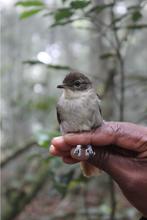 |
Female need for paternal care shapes variation in extra-pair paternity in a cooperative breeder, 2020, L. Cousseau, D. Van de Loock, M. Githiru, C. Vangestel, L. Lens, 2020, Behavioral Ecology, 31: 548–558 (May 2020). |
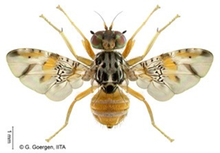 |
Impact of sample preservation and manipulation on insect gut microbiome profiling. A test case with fruit flies (Diptera, Tephritidae), M. De Cock, M. Virgilio, P. Vandamme, A. Augustinos, K. Bourtzis, A. Willems, M. De Meyer, 2019, Frontiers in Microbiology, 10 (Dec. 2019). |
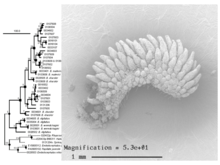 |
Phylogenetic analysis of the Baikalodrilus species flock (Annelida: Clitellata: Naididae), an endemic genus to Lake Baikal (Russia), P. Martin, G. Sonet, N. Smitz & T. Backeljau, 2019, Zoological Journal of the Linnean Society, 187(4): 987–1015 (Nov. 2019). |
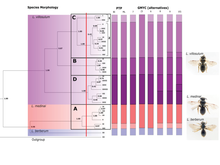 |
Integrative taxonomy resuscitates two species in the Lasioglossum villosulum complex (Kirby, 1802) (Hymenoptera: Apoidea: Halictidae), , 2019, European Journal of Taxonomy, 541 (Sept. 2019).
|
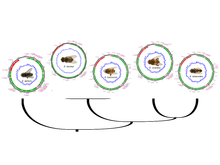 |
First mitochondrial genomes of five hoverfly species of the genus Eristalinus (Diptera: Syrphidae), Gontran Sonet, Yannick De Smet, Min Tang, Massimiliano Virgilio, Andrew D. Young, Jeffrey H. Skevington, Ximo Mengual, Thierry Backeljau, Shanlin Liu, Xin Zhou, Marc De Meyer & Kurt Jordaens. 2019. Genome, 2019; 62(10): 677-687 (Jul. 2019). |
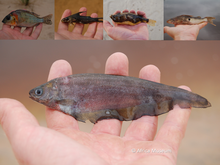 |
DNA barcoding fishes from the Congo and the Lower Guinean provinces: Assembling a reference library for poorly inventoried fauna by Gontran Sonet, Jos Snoeks, Zoltán T. Nagy, Emmanuel Vreven, Gert Boden, Floris C. Breman, Eva Decru, Mark Hanssens, Armel Ibala Zamba, Kurt Jordaens, Victor Mamonekene, Tobias Musschoot, Jeroen Van Houdt, Maarten Van Steenberge, Soleil Lunkayilakio Wamuini & Erik Verheyen. Mol Ecol Resour. 2019;19:728–743 (May 2019). |
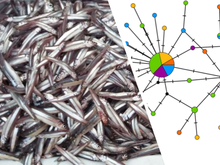 |
First genomic study on Lake Tanganyika sprat Stolothrissa tanganicae: a lack of population structure calls for integrated management of this important fisheries target species, E.L.R. De Keyzer, Z. De Corte, M. Van Steenberge, J.A.M. Raeymaekers, F.C.F. Calboli, N. Kmentová, T.N.’Sibula Mulimbwa, M. Virgilio, C. Vangestel, P.Masilya Mulungula, F.A.M. Volckaert, M.P.M. Vanhove, 2019, BMC Evolutionary Biology, 19:6. (Mar. 2019). |
 |
Complete list of publications |